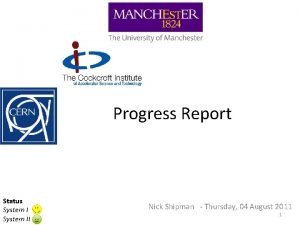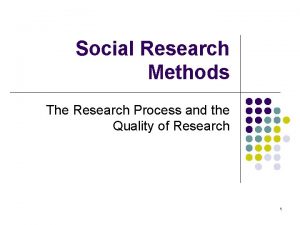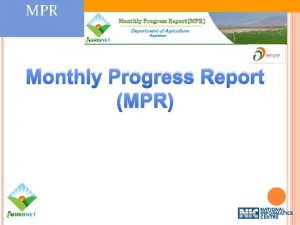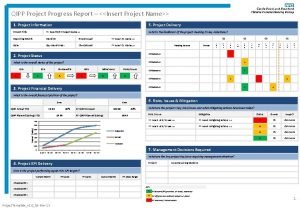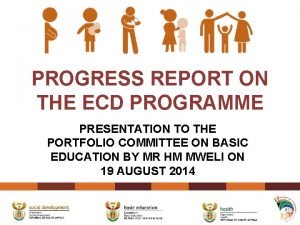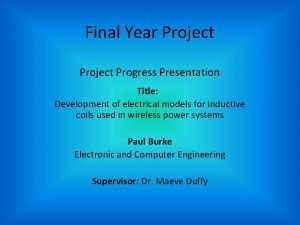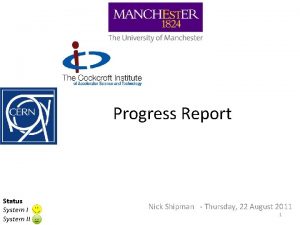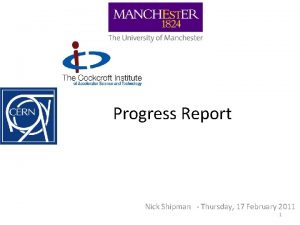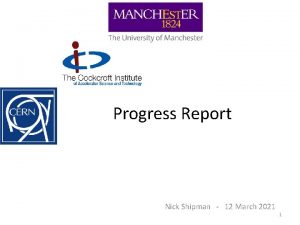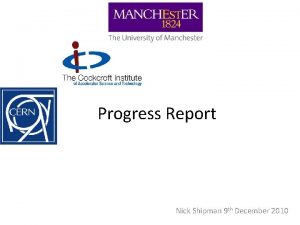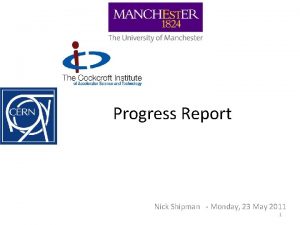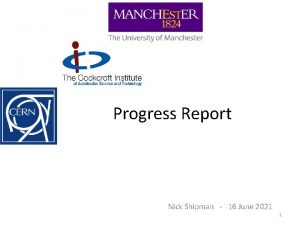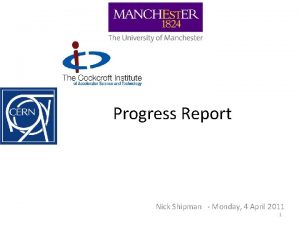Progress Report Status System II Nick Shipman Thursday








- Slides: 8

Progress Report Status System II Nick Shipman - Thursday, 04 August 2011 1

This week Lab work – Gap not constant in variable T sample holder – Temperature controller broken (have replaced) – More “global pollution 0” measurements in System 1 Fixed Gap Design – Good progress Capacitance distance measurement – no more luck with UTI yet Helped give a joint Me. VArc highlight presentation at the RF group meeting Installed and started learning how to use CST Microwave Studio – fine so far… Wrote simple Matlab function to calcualte the Murphy-Good improvement to the Fowler-Nordheim field emission current, I will use this later to see how easy it would be to devolve Beta and the work function by varying the temperature.

CST Microwave Studio Tutorials Fixed Gap Design • It looks like it will be possible to construct the fixed gap system from 80 mm diameter discs despite the large ~550 kg force • However the dielectric used to separate the discs will need to run most of the way around the circumference. Still to do • Make some vacuum conductance calculations to ensure we can pump down the volume between the discs in a reasonable time. • Decide on the details of the antennae which we will use. • Decide on an appropriate fall off geometry at the edge of the disc through simulatio 0 ns to minimise field enhancement.

Me. VArc Summary: Dislocations Marc Fivel – 3 D Discrete Dislocation Dynamics Simulations 1. TEM video showing a Frank Read Source in action 2. Persistent Slip Band formation – Model/Simulation/Experimental Evidence { Aarne Pohjonen – Dislocation mechanisms on a near surface void Steve Fitzgerald – Dislocations 3. Model for protrusion formation under E field supported by simulations 4. Details of the experimental evidence for the required voids 5. May explain conditioning and BD resistance ranking by crystal structure Me. VArc Programme Me. VArc Highlights Nick Shipman - Wednesday, 03 August 2011 4

1. TEM video showing a Frank-Read source in action Taken using Transverse-Electron-Microscopy TRDIS simulation of Frank Read source “A Frank-Read Source is a mechanism explaining the generation of multiple dislocations in specific well spaced slip planes in crystals when they are deformed. ” Wikipedia

2. Persistent Slip Band Formation One frame from the new nodal 3 D discrete dislocation simulation code Numodis which was used to simulate low strain fatigue in AISI 316 L Steel. ~10 um An SEM image courtesy of Markus Aicheler showing the damage due to pulse surface heating on copper.


Upcoming/Ongoing Capacitance measurements with UTI More CST Fixed Gap Design
